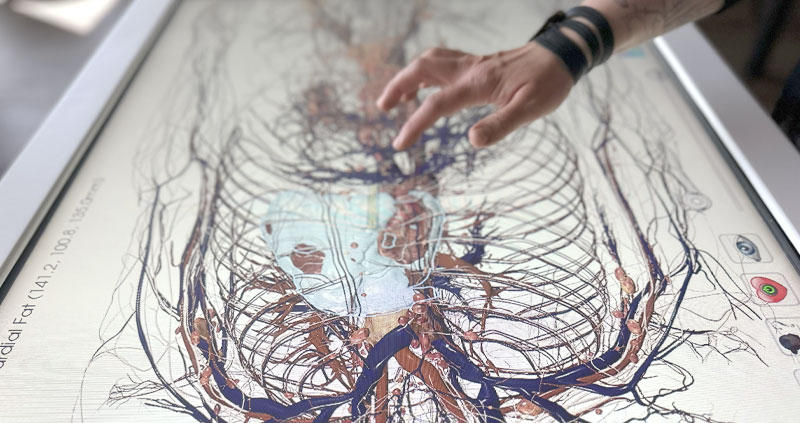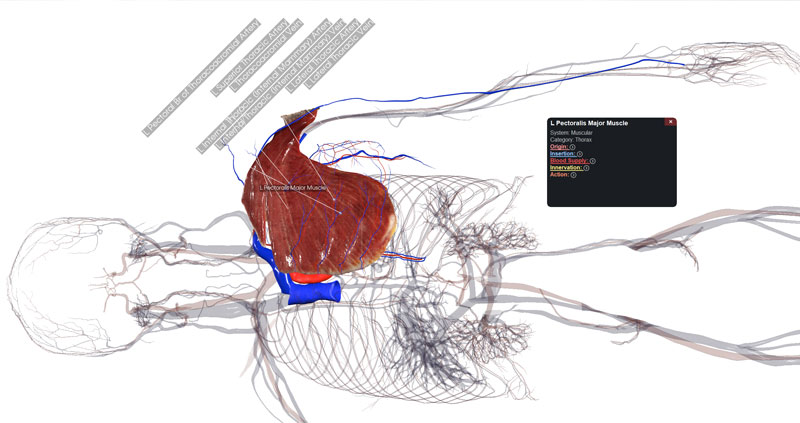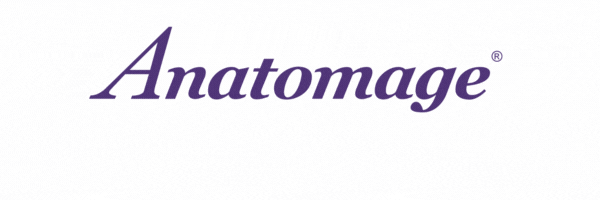Case Study: Mercy University
Case Study:
Mercy University
Photo provided by Mercy University
Broadening Anatomy Access: How Mercy University Transformed Anatomy Education and Enhanced Retention Rates
Empowering Multi-Level Learning Through Interactive Technology
In 2018, Mercy University made a pivotal decision to significantly reduce its reliance on cadaver-based anatomy labs with the Anatomage Table, a digital dissection platform powered by real human cadaver data. The move was driven by a need to reduce costs and broaden access to advanced anatomical learning for both undergraduate and graduate students.
Directed by Dr. Ferdinand (Fenn) Esser, Chair of the Health & Exercise Science Department, the faculty saw the Anatomage Table as more than a cost-saving measure — it was a chance to adopt a scalable solution that could improve instruction, expand curricular reach, and foster deeper student engagement. After evaluating several 3D anatomy technologies, Mercy University selected Anatomage for its continued software improvements and realistic human datasets.
Challenge
Prior to 2018, Mercy University’s anatomy curriculum relied heavily on traditional cadaver dissection, which came with the added complications of lab logistics and safety constraints. Additionally, the cost of leasing bodies and maintaining the cadaver lab was high, adding a considerable amount to student fees. As Dr. Esser noted, “We needed to upgrade to reduce cost… student fees were going high and of course, our fees to maintain the lab.”
Beyond the financial strain, the traditional cadaver lab model was creating inequitable access to hands-on anatomical learning. Graduate students had exclusive access to the cadaver lab, while the majority of undergraduate students were relegated to theoretical, lecture-based learning during their foundational courses. This disparity was particularly problematic given that these undergraduate students would eventually need the same clinical thinking skills and anatomical knowledge as their graduate counterparts.
The institution also sought to modernize its teaching approach. Maintaining a cadaver lab meant high operational costs, time-consuming preparation, and limited instructional flexibility. Students spent valuable time on setup and cleanup, rather than maximizing learning. The faculty needed a way to streamline anatomy instruction, reduce cost, and introduce modern pedagogical tools.
Solution
Mercy University decided to adopt the Anatomage Table as a central learning tool in its health science curriculum. “The Anatomage Table [offered] a unique opportunity,” shared Dr. Esser. “We saw that Anatomage was working to improve the product and sustainability was huge to us for the future.” The university introduced the Anatomage Table to play a key role across two distinct academic levels:

Real-human segmented structures on Anatomage Table
The university introduced the Anatomage Table to play a key role across two distinct academic levels:
- Undergraduate instruction: In their introductory Human Anatomy & Physiology course, freshman students use the Anatomage Table as part of a four-station dry lab model. Alongside microscopes and physical models, the Anatomage Table enables hands-on exploration of human anatomy. Each session concludes with a case study exercise, prompting students to apply their anatomical knowledge to real-world clinical scenarios.
- Graduate instruction: In higher-level musculoskeletal and regional anatomy courses, students work in teams to recreate and annotate preset structures on the Anatomage Table, where sessions are tied to module-specific lists of bones, muscles, and nerves. Students are quizzed on these structures before class and use the Anatomage Table to build their understanding collaboratively through labeling, coloring, and spatial manipulation.
Assessment integration became seamless through the Anatomage Table’s quiz function, enabling timed practical exams that allow instructors to track student performance across multiple sections and modules systematically. The implementation strategy also emphasized collaborative learning. “The Anatomage Table allows students to challenge each other. Students know what they have to do, and they love to prove to each other what they can do on the Table,” Dr. Esser said.
Since using the Anatomage Table, the students can be self-learners and team-players, and that, to me, means everything. We talk about a growth mindset where you want the students to go to have this longevity of learning throughout their life, and you see students use that. The Anatomage Table has that ability to get students interacting with other students.
Dr. Fenn Esser, Health & Exercise Science Department Chair at Mercy University
Results
Since investing in the Anatomage Table, Mercy University has observed a noticeable improvement in classroom engagement, student collaboration, and overall program retention. “After that 20 to 30 minute pre-course presentation, everybody is interacting, challenging each other,” Dr. Esser shared. “And they’re not talking about what they’re going to do on the weekend, they’re really talking about the material because it’s just right there in front of them.”

Annotated structures on Anatomage Table
The impact has been particularly transformative at the freshman level. Before Anatomage, only graduate students accessed cadaver-based learning in high-cost labs. Now, undergraduates experience in-depth human anatomy as early as their first year, gaining the visual and tactile context that supports critical thinking and clinical reasoning. The transformation has been remarkable, with student retention rates in their A&P course increasing from 40% to nearly 90% — an unprecedented improvement that Dr. Esser attributed to multiple factors, including the strategic implementation of the Anatomage Table.
Mercy has also observed a cultural shift in how anatomy is taught. The focus has moved from instructor-led lecture to student-led exploration with faculty almost acting like facilitators, working alongside students, supporting their learning journeys, and targeting individual needs. “I don’t have to be the main focus,” said Dr. Esser. “That helps me be able to chase after individuals I know who are struggling and learn from individuals who I know really have it down.”
By integrating the Anatomage Table into both undergraduate and graduate coursework, Mercy University has created a more accessible, dynamic, and student-centered approach to anatomy education — one that prepares future health professionals with confidence and clarity from day one.
